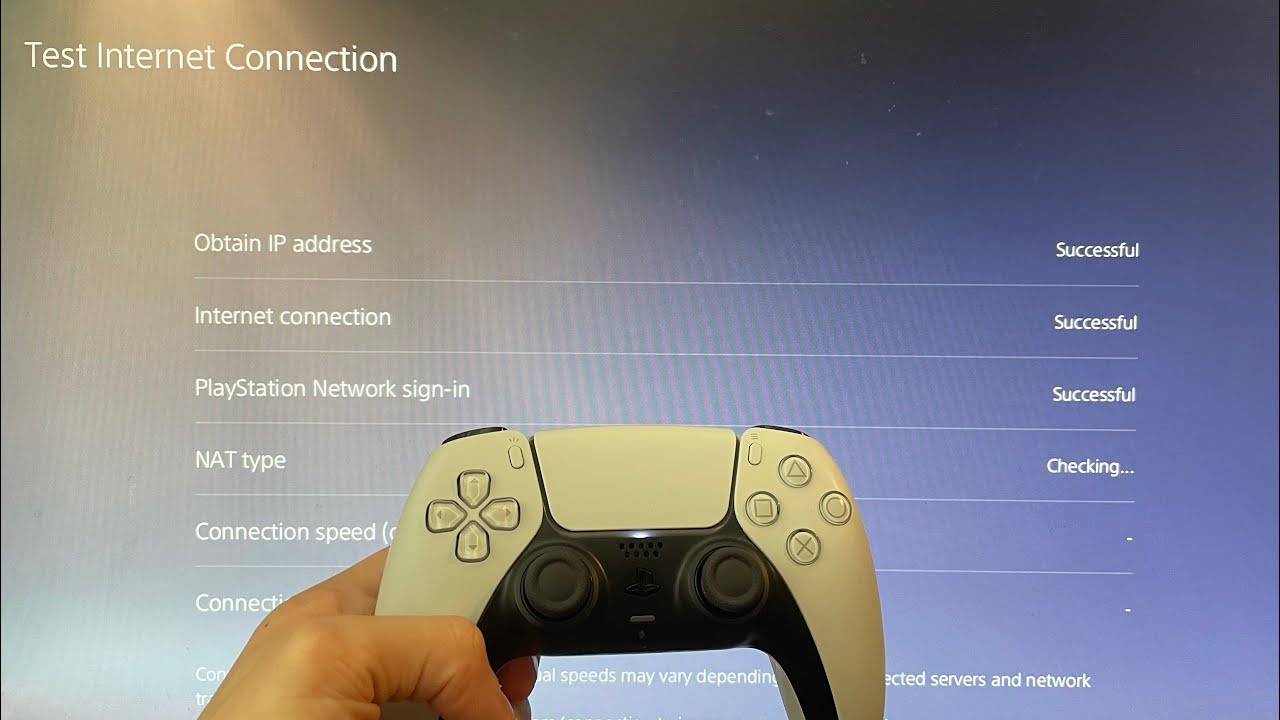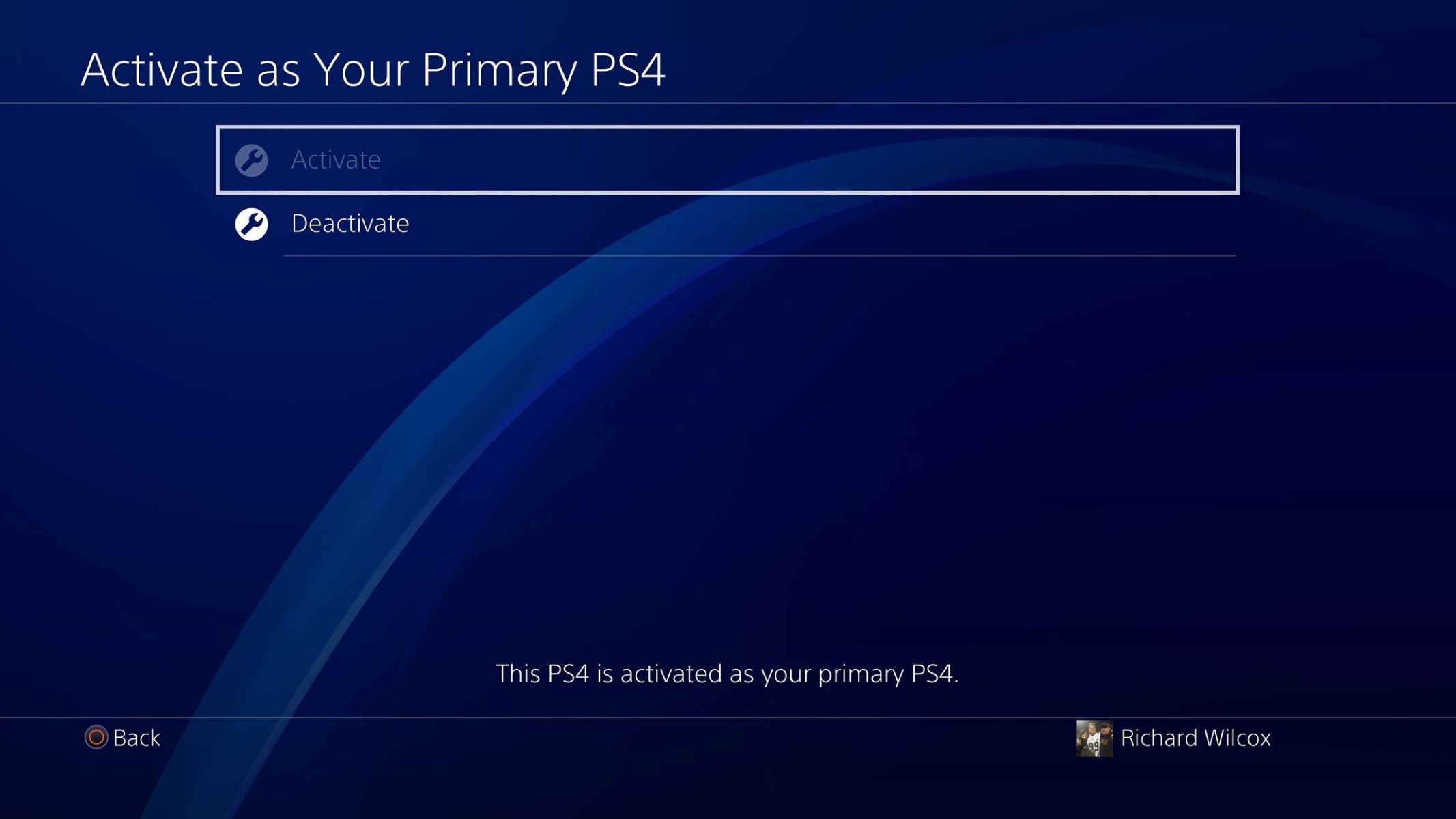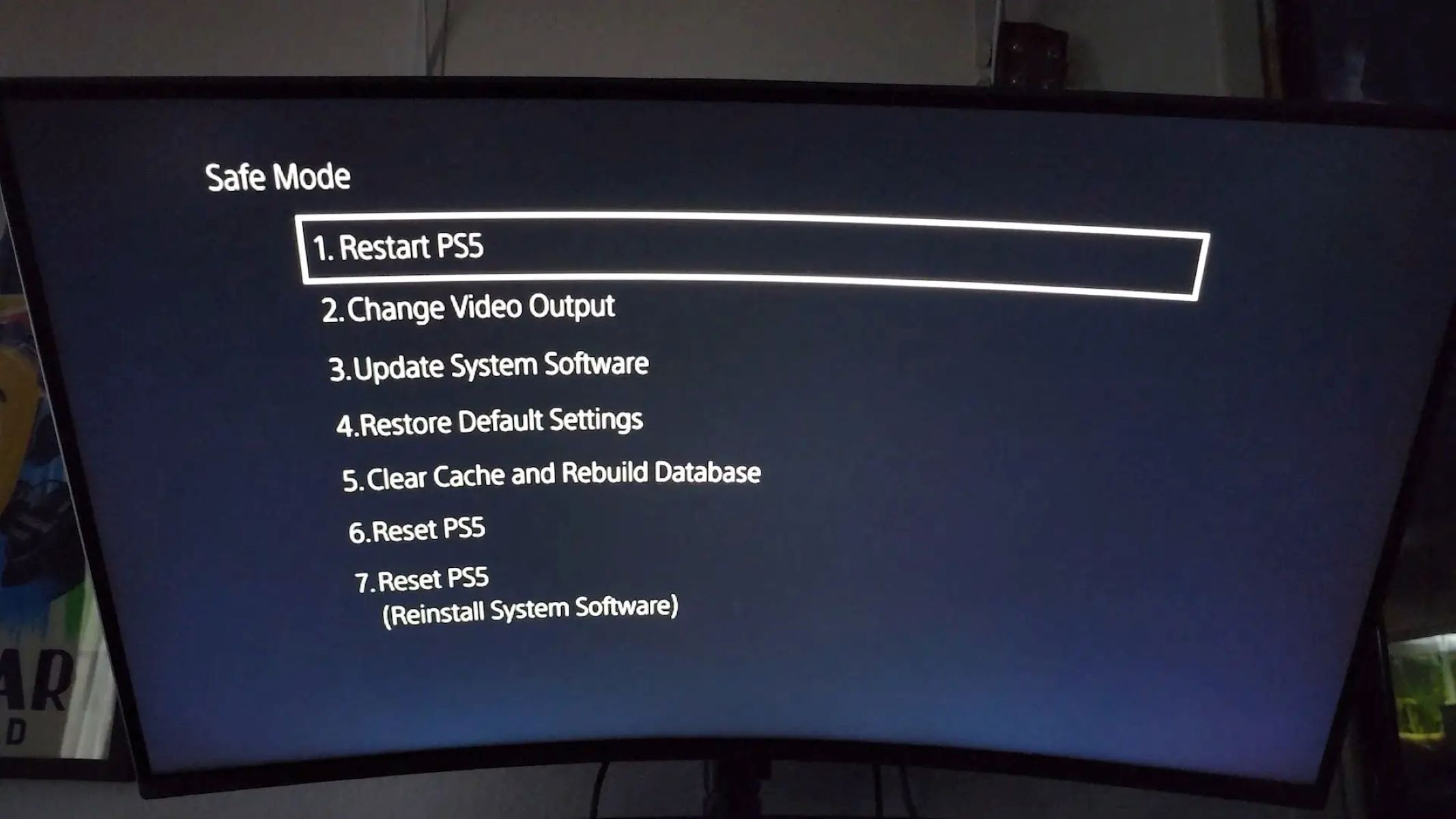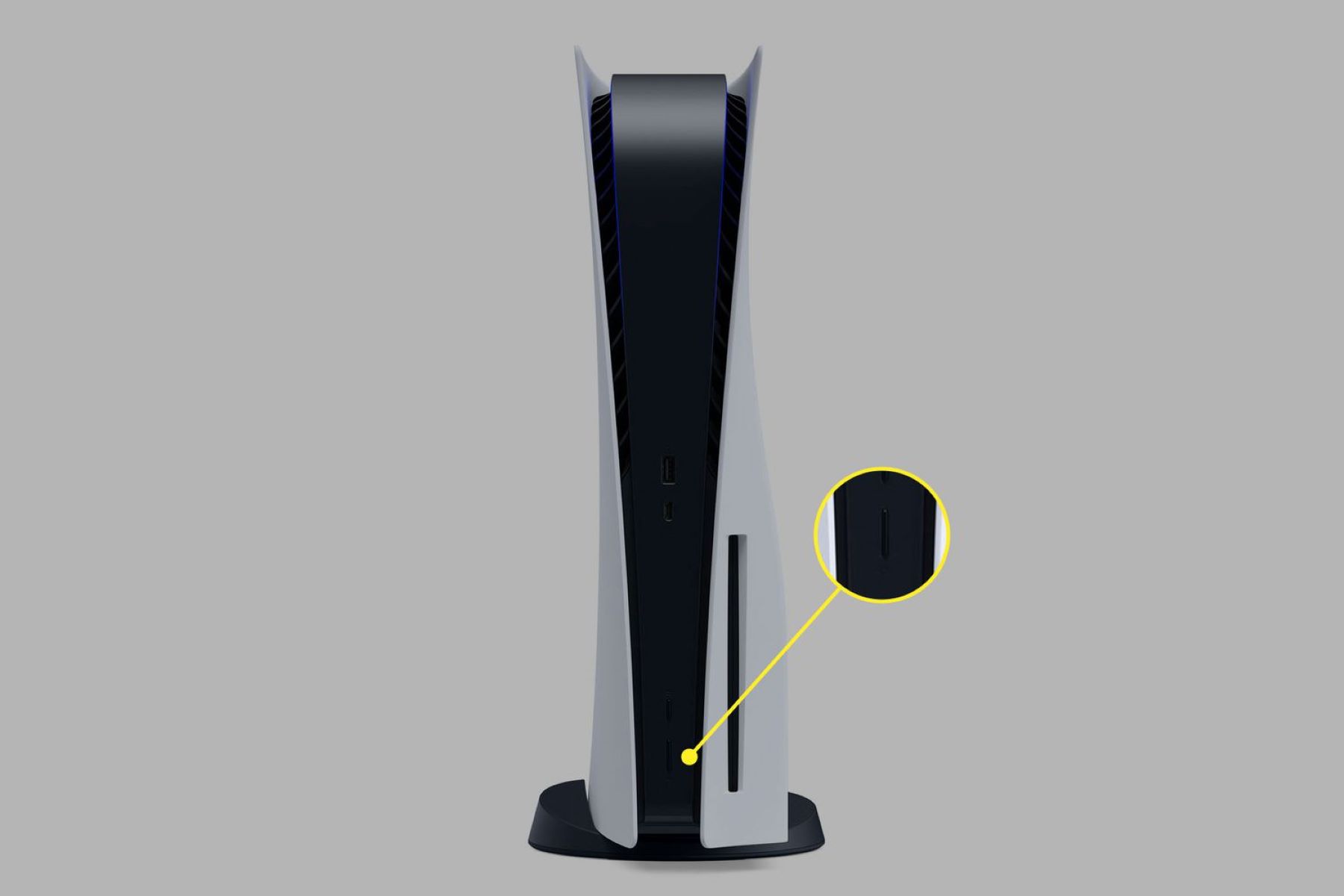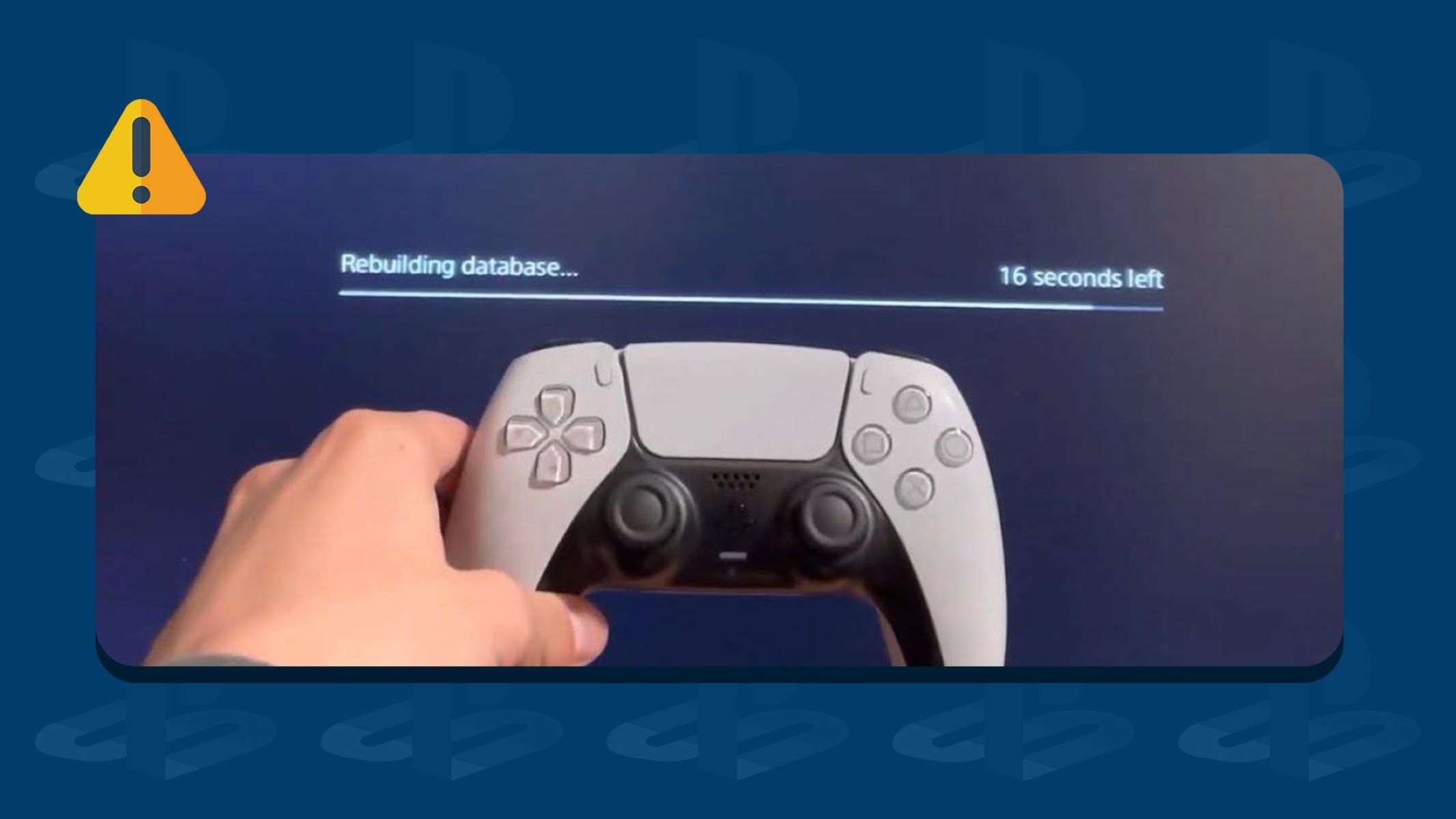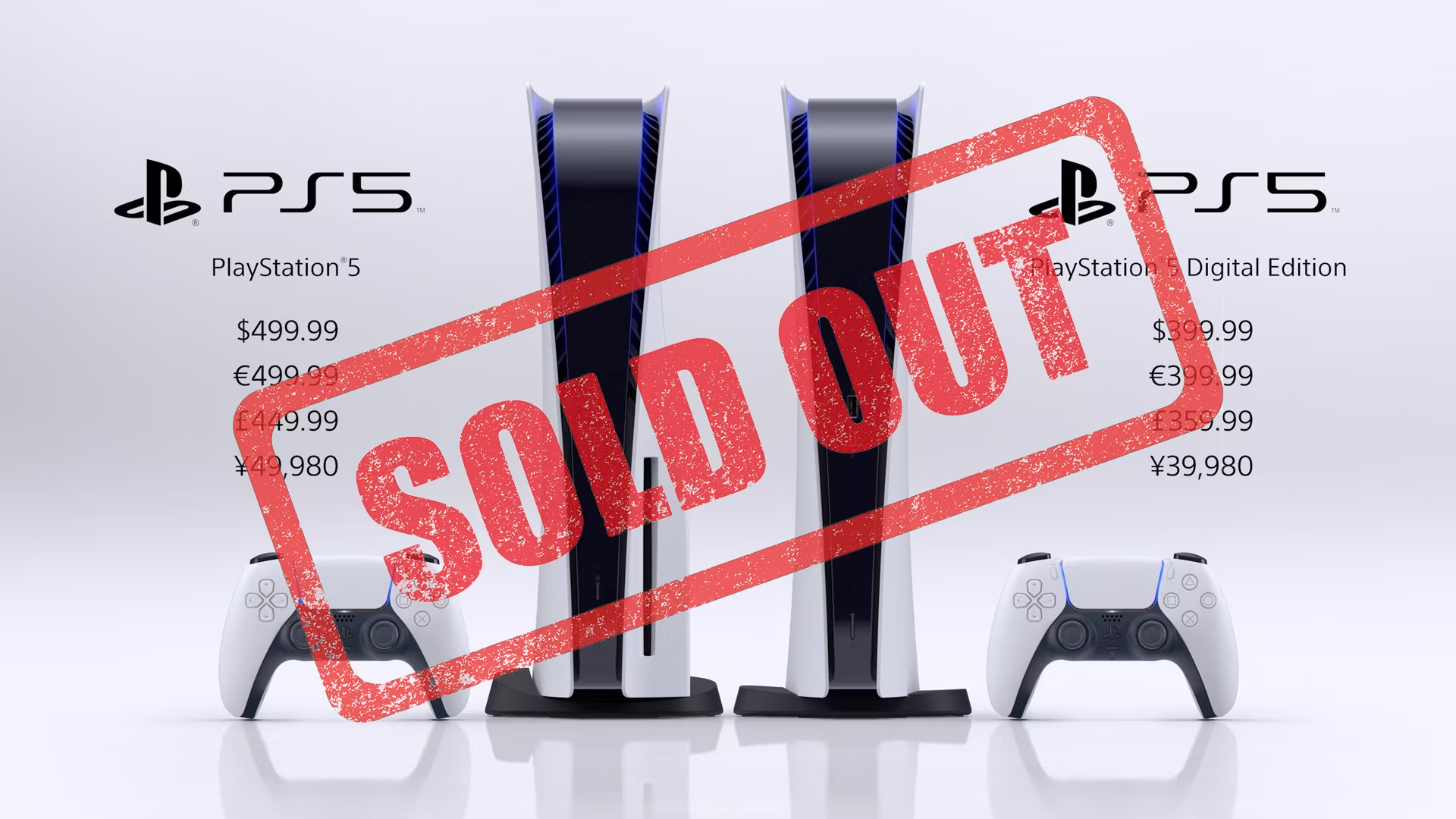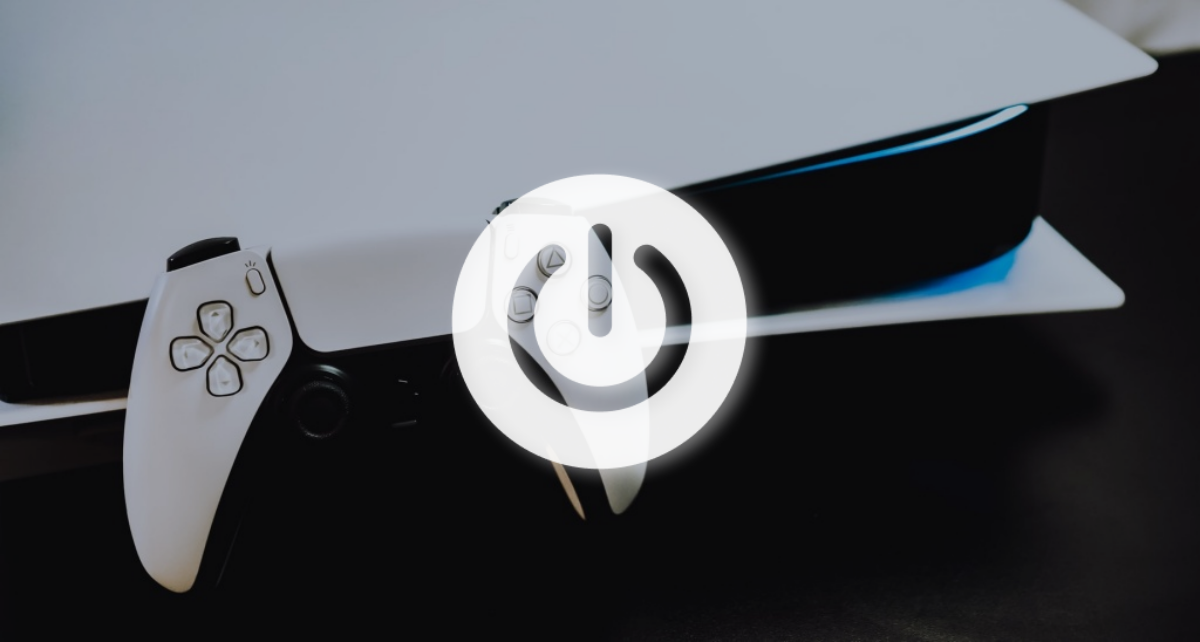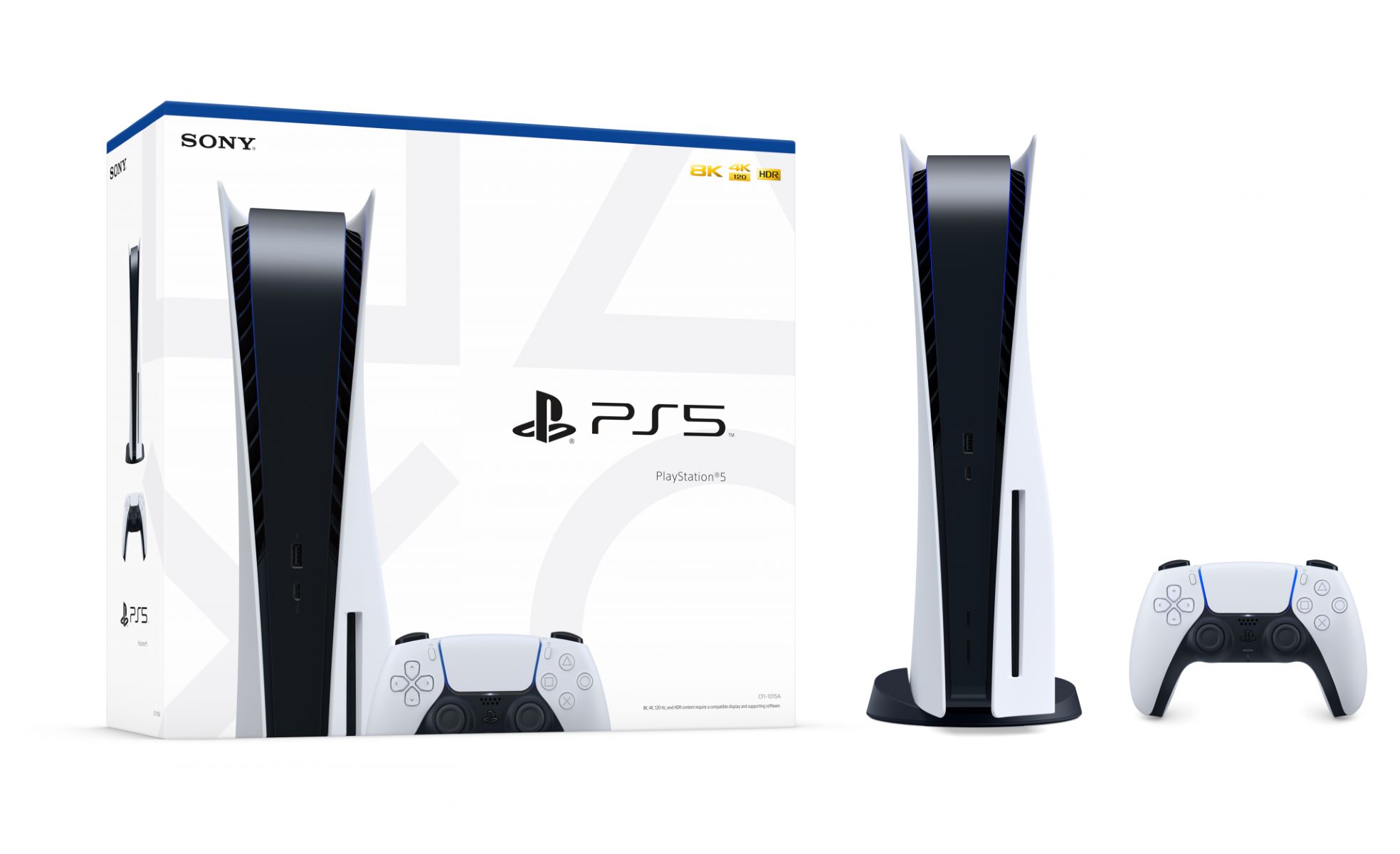Common Connection Issues
Experiencing connection issues with your PlayStation 5 (PS5) can be frustrating, especially when you’re eager to jump into online gaming or access the PlayStation Network (PSN). Fortunately, many common connection issues can be resolved with a few simple troubleshooting steps. In this article, we will explore some of the most common issues and provide solutions to help you get back online and connected to the PSN.
One of the first things you should do when experiencing connection issues with your PS5 is to check your internet connection. Ensure that your Wi-Fi or Ethernet cable is securely connected and functioning properly. You can also try restarting your router or modem to refresh the connection.
Another factor that can affect your PS5’s connection to the PSN is the status of the PlayStation Network itself. Occasionally, the PSN may experience maintenance or outage issues, which can render your PS5 unable to connect. To check the status of the PSN, visit the official PlayStation website or check the official PlayStation social media accounts for any relevant updates.
Restarting your PS5 and network equipment is another troubleshooting step you can take. Simply turn off your PS5, unplug the power cord from both the console and your router or modem, wait for a few minutes, and then plug everything back in. This can help clear any temporary glitches or issues that may be affecting your connection.
Keeping your PS5 system software up to date is crucial for maintaining a stable and secure connection. Regularly check for system software updates and install them when available. These updates often contain important bug fixes and improvements that can help resolve connection-related issues.
Your Domain Name System (DNS) settings can also affect your PS5’s connection to the internet. By default, most routers use the DNS settings provided by your internet service provider (ISP). However, you can manually change your DNS settings to use a public DNS server, such as Google DNS or OpenDNS, which may improve your connection stability. Consult your router’s documentation or contact your ISP for instructions on how to change your DNS settings.
If you’re using a proxy server, try disabling it to see if it resolves your connection issues. Proxy servers can sometimes interfere with the PS5’s ability to connect to the PSN. Navigate to the Network Settings on your PS5 and disable any proxy server settings that may be enabled.
Port forwarding is a configuration that allows incoming internet traffic to reach specific devices on your network. If your PS5 is not set up for port forwarding correctly, it may affect your connection. Consult your router’s manual or contact your router manufacturer for instructions on how to set up port forwarding for your PS5.
If possible, test your internet connection with other devices, such as your computer or smartphone. If these devices are also experiencing connection issues, it may indicate a problem with your internet service or network equipment. Contact your internet service provider for further assistance.
If none of the above solutions work and you continue to experience connection issues with your PS5, it may be necessary to contact PlayStation support. Their team of technical experts can provide additional guidance and troubleshoot your specific issue to get you back online as quickly as possible.
Check Your Internet Connection
When experiencing connection issues with your PlayStation 5 (PS5), checking your internet connection is the first step to identify and resolve the problem. A stable and reliable internet connection is essential for seamless online gaming and accessing the PlayStation Network (PSN). Here are some steps to help you troubleshoot and improve your internet connection for your PS5:
1. Ensure Proper Connection: Verify that your PS5 is connected to the internet either via Wi-Fi or Ethernet cable. Make sure the cables are securely plugged into their respective ports on your PS5 and router/modem.
2. Check Network Equipment: Restart your router/modem by unplugging the power cord, waiting for a few seconds, and plugging it back in. This simple reset can often resolve temporary connection issues.
3. Test Connection Speed: Perform an internet speed test on a computer or smartphone connected to the same network as your PS5. This test can determine if your network is providing the expected upload and download speeds. If the speeds are significantly lower than expected, contact your internet service provider (ISP) to address the issue.
4. Reduce Network Interference: Nearby electronic devices, such as cordless phones or microwave ovens, can interfere with your Wi-Fi signal, causing connection issues. Move your PS5 closer to the router or eliminate potential sources of interference to improve signal strength.
5. Upgrade Your Internet Plan: If your current internet plan does not offer sufficient bandwidth for online gaming, consider upgrading to a higher-speed plan. Games with large updates or online multiplayer require faster internet speeds to ensure a smooth experience.
6. Relocate Router/Modem: If possible, move your router or modem to a central location within your home. This can help distribute the Wi-Fi signal more evenly, reducing the chances of dead zones or weak connections.
7. Secure Your Network: Protect your Wi-Fi network with a secure password to prevent others from accessing it without permission. Unauthorized users can hog bandwidth, causing slow or intermittent connection issues.
8. Enable Quality of Service (QoS): Some routers have QoS settings that prioritize network traffic for specific devices or applications. Prioritizing your PS5’s traffic can help optimize your connection and minimize lag during online gaming sessions.
9. Contact Your ISP: If you have tried all the above steps and are still experiencing persistent connection issues, contact your ISP for further assistance. They can perform additional diagnostics to identify any specific issues with your internet connection.
By following these steps, you can troubleshoot and improve your internet connection for your PS5. Remember, a stable and reliable connection is vital for enjoying seamless online gaming and accessing the PSN.
Check the PlayStation Network Status
When facing connectivity issues with your PlayStation 5 (PS5) and unable to sign in to the PlayStation Network (PSN), it is essential to check the status of the PSN. The PSN is a online gaming and multimedia service provided by Sony Interactive Entertainment that allows players to access various online features, including multiplayer gaming, digital purchases, and streaming services. Here are some steps to check the PSN status:
1. Visit the Official PlayStation Status Page: Sony provides an official status page that displays the current status of the PSN. Open a web browser on your computer or smartphone and go to the official PlayStation website. Look for the “Status” page or search for “PlayStation Network Status” in the website’s search bar.
2. Check Social Media Channels: Sony communicates important updates and maintenance information regarding the PSN on their official social media channels, including Twitter and Facebook. Follow or subscribe to these channels for the latest announcements and status updates.
3. Monitor Gaming Community Forums: Online gaming community forums, such as Reddit or PlayStation support forums, can provide insights from other players who may be experiencing similar connectivity issues. Check these forums to see if others are reporting problems with the PSN or if there are any workarounds you can try.
4. Verify Maintenance Schedule: Occasionally, the PSN undergoes scheduled maintenance to improve its performance and stability. Check the official PlayStation website or social media channels for notifications about scheduled maintenance. If there is maintenance scheduled, it is advisable to wait until it is completed before attempting to connect to the PSN.
5. Contact PlayStation Support: If you are unable to find any information regarding the PSN status or if the status indicates that the service is operational, but you are still experiencing issues, it is recommended to contact PlayStation Support. Visit the official PlayStation website and look for the support section to find contact information. The PlayStation support team can provide further assistance and troubleshoot the connectivity problem with your PS5.
Checking the PSN status is crucial to determine if any widespread connectivity issues are affecting the service. By regularly monitoring the status page, following social media channels, and accessing gaming community forums, you can stay informed about any PSN disruptions and seek the necessary steps to resolve connectivity issues with your PS5.
Restart Your PS5 and Network Equipment
If you’re encountering connection issues with your PlayStation 5 (PS5) and unable to connect to the internet or the PlayStation Network (PSN), a simple yet effective troubleshooting step is to restart your PS5 and network equipment. Restarting can help resolve temporary glitches and refresh the connection. Here’s how to do it:
1. Restart Your PS5: Press and hold the power button on your PS5 console until you hear a beep. This may take around 7 seconds. Your PS5 will power off. After it shuts down completely, wait for a few minutes before proceeding to the next step.
2. Unplug Your Router and Modem: Locate the power cords connected to your router and modem. Unplug both of them from their respective power sources. Wait for at least 5 minutes to allow any residual power to dissipate.
3. Power On Your Router and Modem: Plug the power cords of your router and modem back into their power sources. Wait for all the lights to stabilize, indicating that the devices are fully powered on.
4. Power On Your PS5: Press the power button on your PS5 console to turn it back on. After it boots up, go to the network settings and attempt to connect to the internet or sign in to the PSN.
If restarting your PS5 and network equipment doesn’t resolve the issue, try connecting your PS5 to a different network, if possible, to determine if the problem lies with your network setup. If the issue persists on another network, it may indicate a problem with your PS5’s hardware or software, and you may need to seek further assistance from PlayStation Support.
Restarting your PS5 and network equipment is a quick and easy troubleshooting step that can resolve many common connection issues. It’s always worth trying before delving into more complex troubleshooting methods. By following these steps, you can refresh your network connection and potentially restore your PS5’s ability to connect to the internet and the PSN.
Update Your PS5 System Software
Keeping your PlayStation 5 (PS5) system software up to date is crucial for maintaining a stable and secure connection to the internet and the PlayStation Network (PSN). System software updates often include important bug fixes, performance improvements, and security enhancements that can help resolve connection-related issues. Here’s how to update your PS5 system software:
1. Connect to the Internet: Ensure that your PS5 is connected to the internet either through a wired Ethernet connection or via Wi-Fi. A stable internet connection is necessary to download and install system software updates.
2. Check for Updates: On your PS5 home screen, navigate to the “Settings” menu, which is represented by the gear icon. Scroll down and select “System”, then choose “System Software”. From here, select “System Software Update and Settings” and then choose “Update System Software”.
3. Download and Install Updates: Your PS5 will now check for the latest system software updates. If an update is available, follow the on-screen prompts to download and install it. Make sure your PS5 remains connected to the power source and the internet during the update process.
4. Restart Your PS5: After the system software update is complete, your PS5 will automatically restart. Allow the console to fully boot up before attempting to connect to the internet or sign in to the PSN.
It is recommended to enable automatic system software updates on your PS5. This way, your console will automatically download and install the latest updates when they become available. To enable automatic updates, go to the “Settings” menu, select “System”, then choose “System Software”. From here, select “System Software Update and Settings” and enable the “Automatically Install PS5 Updates” option.
If you’re still experiencing connection issues after updating your PS5 system software, consider restarting your PS5 and network equipment as well to further troubleshoot the problem. Additionally, ensure that your internet connection is stable and that you’ve checked the PlayStation Network (PSN) status for any reported issues.
By regularly updating your PS5 system software, you can ensure that your console is running the latest features and improvements, including those that may address connection-related issues. Updating your PS5 system software is a simple yet important step to maintain a seamless and reliable connection to the internet and the PSN.
Check Your DNS Settings
The Domain Name System (DNS) is responsible for translating domain names, like google.com, into IP addresses that computers can understand. Issues with DNS settings can sometimes interfere with your PlayStation 5 (PS5) connection to the internet and the PlayStation Network (PSN). By checking and potentially changing your DNS settings, you can troubleshoot and improve your connection. Here’s how to proceed:
1. Access Your Router Settings: Open a web browser on a computer or smartphone connected to the same network as your PS5. Type your router’s default IP address (usually written on the router or in its manual) into the browser’s address bar. Enter your login credentials to access the router’s settings.
2. Locate DNS Settings: Once inside the router settings, look for the DNS settings. This location may vary depending on the router’s manufacturer and firmware. Check the settings for options related to DNS or network configuration.
3. Review Current DNS Settings: Note down the current DNS settings before making any changes. Some routers automatically obtain DNS settings from your internet service provider (ISP), while others allow manual configuration. Make sure to record both the primary and secondary DNS addresses, if applicable.
4. Change DNS Settings (Optional): If you suspect DNS issues, you can manually change the DNS settings. Instead of relying on your ISP’s default DNS servers, you can use public DNS servers like Google DNS (8.8.8.8 and 8.8.4.4) or OpenDNS (208.67.222.222 and 208.67.220.220). Consult your router’s documentation or contact your ISP for instructions on how to change the DNS settings.
5. Save and Apply Changes: After making any changes to the DNS settings, save the changes and apply them. Your router may need to restart or reconnect to the internet for the changes to take effect. Ensure that your PS5 is still connected to the network after the router restarts.
6. Test the Connection: Now that you’ve made changes to the DNS settings, turn on your PS5 and test the connection. Go to the network settings on your PS5 and attempt to connect to the internet or sign in to the PSN. If the connection is successful, you’ve likely resolved any DNS-related issues.
If changing the DNS settings doesn’t improve your connection or if you’re experiencing difficulties with the new settings, revert to the previous DNS settings or consult your ISP for further assistance.
By reviewing and potentially changing your DNS settings, you can address DNS-related issues that may be affecting your PS5’s connection to the internet and the PSN. Ensure that you understand the implications of changing DNS settings and consider consulting your ISP or router’s documentation for more specific guidance.
Disable Proxy Server
A proxy server acts as an intermediary between your device and the internet, routing your internet traffic through a different server. While proxy servers can offer benefits like enhanced privacy and security, they can also interfere with your PlayStation 5 (PS5)’s connection to the internet and the PlayStation Network (PSN). Disabling the proxy server on your PS5 can help troubleshoot and resolve connection issues. Here’s how you can proceed:
1. Access Network Settings: Power on your PS5 and navigate to the home screen. From there, go to the settings menu, represented by the gear icon. Scroll down and select “Network”.
2. Select Network Settings: Within the “Network” menu, choose “Settings”. This is where you can configure various aspects of your PS5’s network connection, including proxy settings.
3. Configure Proxy Settings: Within the “Settings” menu, select “Set Up Internet Connection”. Choose either the Wi-Fi or Ethernet connection option, depending on how your PS5 is connected to the internet.
4. Choose “Custom” Setup: In the network connection setup, choose the “Custom” setup option. This allows you to manually configure your network settings, including the proxy server settings.
5. Select “Do Not Use” for Proxy Server: When you reach the Proxy Server section, choose the option that says “Do Not Use”. This effectively disables the use of a proxy server for your PS5’s internet connection.
6. Complete the Setup: Follow the on-screen prompts to complete the setup of your network connection. Ensure that you input any required information for your chosen connection type (Wi-Fi or Ethernet). Once the setup is complete, test your connection to see if the disabling of the proxy server has resolved the issue.
If disabling the proxy server doesn’t resolve your connection issues or if you still want to use a proxy for other purposes, consider checking the proxy server’s settings or consulting the provider’s documentation for configuration instructions specific to your setup.
By disabling the proxy server, you can eliminate any potential interference it may cause to your PS5’s connection to the internet and the PSN. This troubleshooting step can help identify and rectify connectivity issues, allowing for a smoother online gaming experience and seamless access to the PlayStation Network.
Ensure Port Forwarding is Set Up Correctly
Port forwarding is a network configuration that allows incoming internet traffic to reach specific devices on your local network, such as your PlayStation 5 (PS5). If your PS5 is experiencing connection issues or is unable to connect to the PlayStation Network (PSN), ensuring that port forwarding is set up correctly can help resolve the problem. Here’s how to check and configure port forwarding:
1. Identify the Required Ports: Determine the specific ports that need to be forwarded for PS5 connectivity. Sony provides a list of recommended ports for the PS5 and PSN connectivity on their support website. Note down the port numbers and protocols (TCP or UDP) for reference.
2. Access Your Router’s Settings: Open a web browser on a computer or smartphone connected to the same network as your PS5. Type your router’s default IP address (usually written on the router itself or in its manual) into the browser’s address bar. Enter your login credentials to access the router’s settings.
3. Locate Port Forwarding Settings: Once inside the router settings, look for the port forwarding or port forwarding/virtual server configuration section. Note that the location and naming of this section may vary depending on your router manufacturer and firmware.
4. Add a New Port Forwarding Rule: Create a new port forwarding rule by specifying the necessary information. This typically includes the port range (for single ports, enter the same number for both the starting and ending port), the protocol (TCP or UDP), the IP address of your PS5 (which can be found in the network settings of your PS5), and enabling the rule.
5. Save and Apply the Changes: After entering the required information, save the port forwarding rule and apply the changes. Some routers may require a restart or confirmation before the changes take effect. Follow the instructions provided by your router’s interface.
6. Test the Connection: Power on your PS5 and test the network connection to see if the port forwarding settings have resolved the connection issue. Go to the network settings on your PS5 and attempt to connect to the internet or sign in to the PSN. If successful, your PS5 should now be able to establish a stable connection.
If you’re unsure about how to configure port forwarding on your specific router, consult the router manufacturer’s documentation or support website for detailed instructions. You can also reach out to the router manufacturer’s support team for further assistance.
By ensuring that port forwarding is set up correctly, you allow the necessary network traffic to reach your PS5, improving its connectivity to the internet and the PSN. This step can help resolve connection issues and ensure a smoother online gaming experience.
Test Your Connection with Other Devices
If you’re experiencing connection issues with your PlayStation 5 (PS5), it’s essential to determine if the problem lies solely with the console or if it’s related to your network setup. One effective troubleshooting step is to test your internet connection with other devices. By doing so, you can identify whether the issue is specific to your PS5 or if it affects multiple devices on your network. Here’s how to go about it:
1. Connect Other Devices to the Network: Ensure that you have other devices available, such as a computer, smartphone, or tablet, that can connect to the same network as your PS5. If you don’t, consider asking a friend or family member to use their device temporarily for testing purposes.
2. Power On the Other Devices: Turn on the additional devices and connect them to your Wi-Fi network or wired Ethernet connection. Ensure that the devices are in close proximity to your router to avoid any potential signal issues.
3. Test Internet Connectivity: Open a web browser on the other device and visit several websites to test its internet connectivity. Ensure that the websites load quickly and without any errors. You can also run an internet speed test on the device to measure the speed of your network connection.
4. Play Online Games or Stream Content: If possible, use the device to play online games or stream content from platforms like Netflix or YouTube. Pay attention to the stability and quality of the connection during these activities.
5. Compare the Results: Compare the performance of the other devices with that of your PS5. If all the other devices experience similar connection issues, the problem is likely related to your network setup or internet service. In such cases, try restarting your router/modem or contacting your internet service provider for further assistance.
6. Isolate the Issue to Your PS5: If the other devices connect to the internet and function properly without any issues, it indicates that the problem is specific to your PS5. In this case, you can focus your troubleshooting efforts on the console itself, such as checking network settings, updating system software, or contacting PlayStation support for assistance.
By testing your internet connection with other devices, you can determine whether the connection issue is isolated to your PS5 or if it affects multiple devices on your network. This information can help narrow down the troubleshooting process and identify the appropriate steps to resolve the connectivity problem.
Contact PlayStation Support
If you have exhausted all troubleshooting steps and are still experiencing persistent connection issues with your PlayStation 5 (PS5), it may be necessary to contact PlayStation Support for further assistance. Their team of technical experts is available to provide guidance and help you resolve any specific issues you may be facing. Here’s how you can get in touch:
1. Visit the PlayStation Support Website: Go to the official PlayStation website and navigate to the support section. Look for the “Contact Us” or “Support” page.
2. Choose Your Country/Region: Select your country or region from the provided list. This ensures that you are directed to the appropriate PlayStation support team for your location.
3. Select the PS5 Category: Locate the category related to the PS5 or connectivity issues. This may be titled “PlayStation 5,” “Hardware and Networking,” or something similar.
4. Explore Support Options: PlayStation support offers various means of communication, including phone support, live chat, email, and social media. Choose the option that best suits your preferences and availability.
5. Provide Relevant Information: When contacting PlayStation support, be prepared to provide relevant information about your PS5 and the connection issues you are experiencing. This may include your PS5’s serial number, a description of the problem, any error codes received, and the troubleshooting steps you have already taken.
6. Follow the Guidance Provided: The PlayStation support representative will guide you through additional troubleshooting steps, if necessary, or provide specific instructions to help resolve your connection issues. Be sure to follow their instructions carefully and provide any requested information or logs promptly.
7. Document Reference Numbers: If you receive a case reference number or support ticket number, write it down or save it for future reference. This will help you track the progress of your support inquiry.
Remember, PlayStation support is dedicated to assisting users with technical issues, including connectivity problems. They have the knowledge and expertise to help diagnose and resolve issues that may be specific to your PS5 or network setup.
Before contacting PlayStation support, make sure to have your PS5 updated with the latest system software and have attempted all relevant troubleshooting steps, such as checking network settings, restarting your PS5 and network equipment, and verifying internet connectivity with other devices.
Contacting PlayStation support will allow you to take advantage of their expertise and receive personalized assistance tailored to your specific connection issues, helping you get back online and fully enjoy your PS5 gaming experience.







